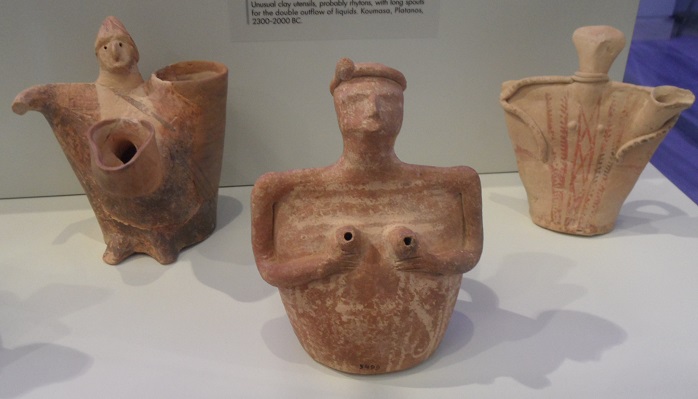
We’re back on Crete, at the world’s finest collection of Minoan artifacts, in the Iraklion museum. We’ll start with the oldest artifacts, from Neolilthic to the early Palatial period.
NOTE: Of course, Thor and I had to make another trip to Greece, as he’s fallen as much in love with the islands as I am. This time, in addition to other island-hopping, I wanted to return to Crete after 37 years. My first months-long trip was as a hippie backpacker, camping in the ruins and falling under the spell of the mysterious, vanished Minoan culture. This time, I got to introduce Thor to “glorious Kriti” and research more settings for my novel-in-progress, THE ARIADNE DISCONNECT. This new blog series started October 19, 2019, and will continue every Saturday.
The Iraklion museum is a fabulous treasure trove of artifacts, as well as a beautifully-organized history tour. The exhibit halls are laid out chronologically, so we’ll follow that thread through the labyrinthine history of the early Cretans and rise of Minoan civilization. (Today we’ll cover up to the early palatial period, and move on next week into the full glory of Minoan art and architecture.)
Until recently, scholars believed that human settlement of the big island was fairly recent (as in Neolithic). Now, Stone Age tools found on Crete suggest that the earliest human inhabitants arrived around 130,000 years ago. Neolithic settlements and artifacts have been found dating from around the 7th millenium BC, and the museum displays include these Neolithic ovens:
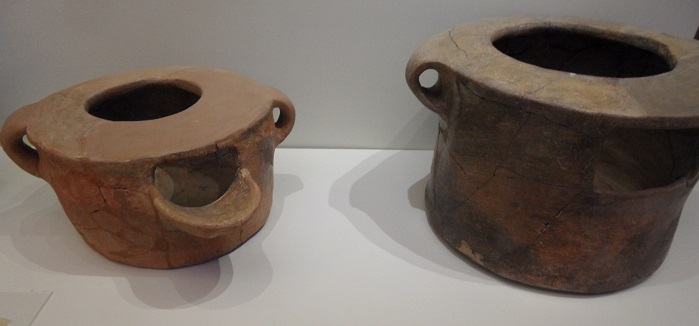

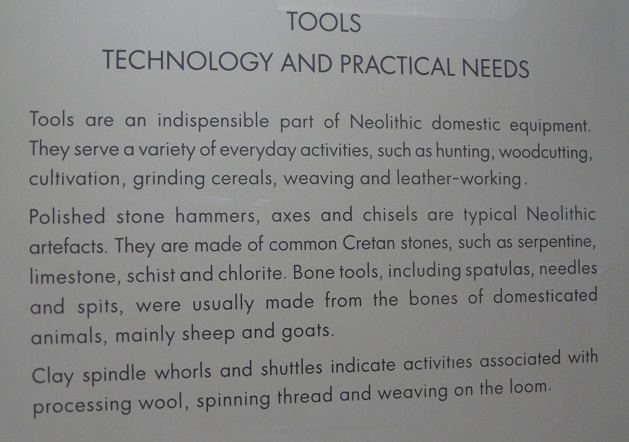
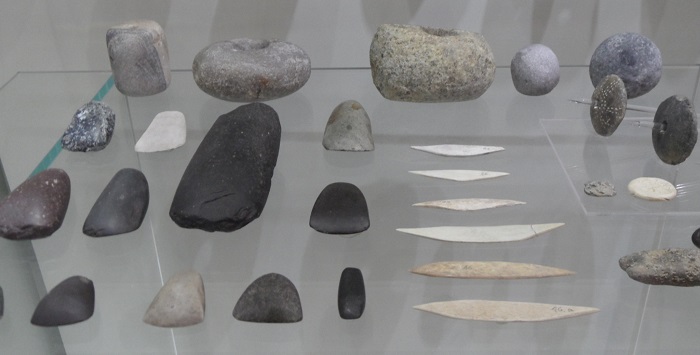
In the early Bronze Age around 3000 BC, it appears that immigrants from Asia Minor may have arrived to mix with the Neolithic residents of Crete. After making necessary tools, people always seem to invest energy into creating beautiful jewelry, such as these pieces from around 2600 to 1900 BC. Materials include gold, silver, rock crystal, lapis lazuli, and carnelian:
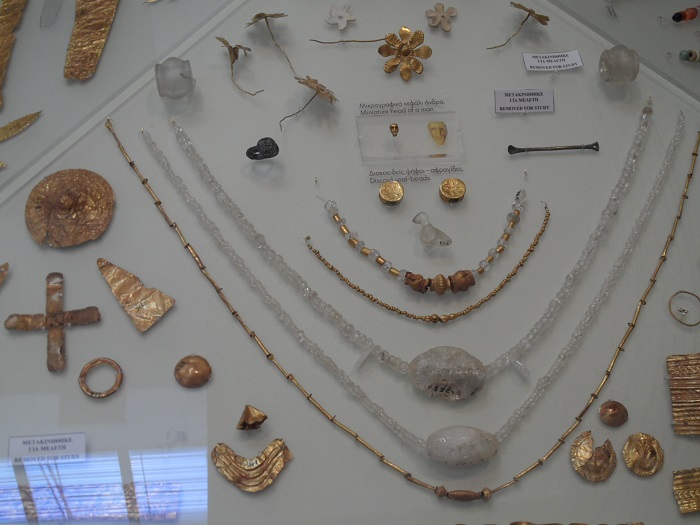
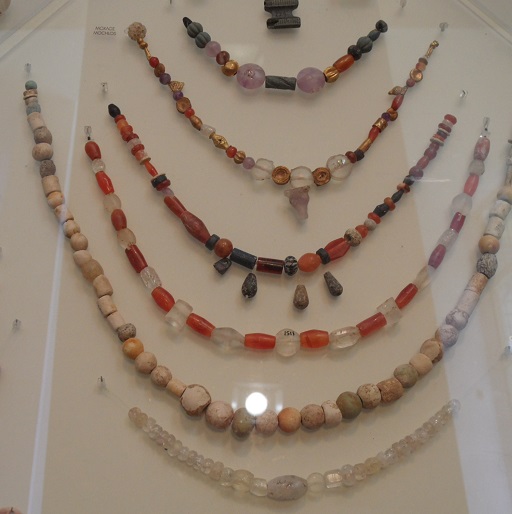
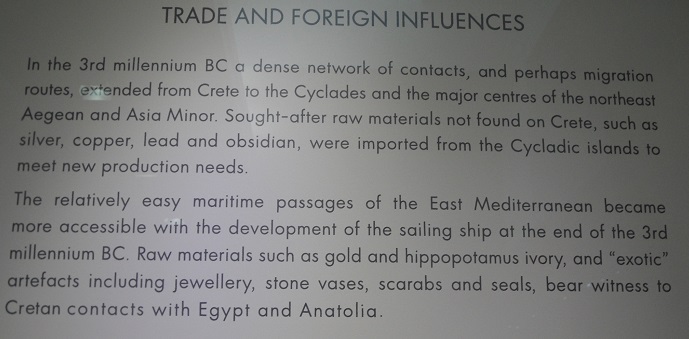
These classic Cycladic marble figurines found near Archanes on Crete, dated from around 2000 BC, provide evidence of the trading contact with those islands.
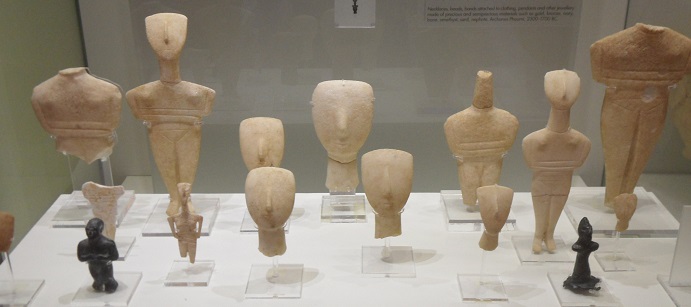
Many of the early Cretan pottery pieces and figurines have a homey feeling, depicting animals and nature surrounding human settlements.
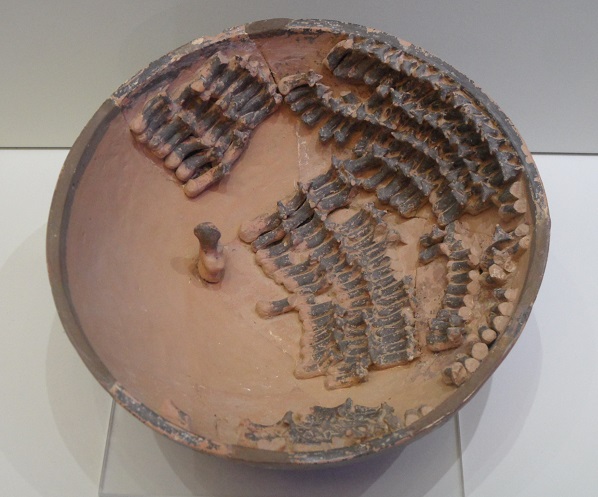
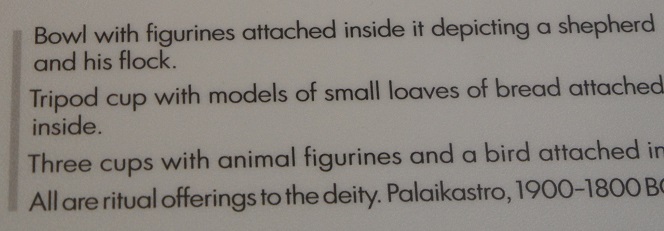
Early stylized human figures could be very creative!
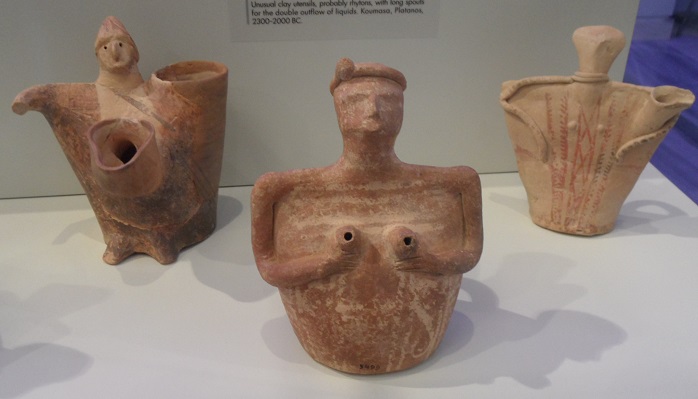

Ritual figurines are common, as are “body parts” used to solicit healing or as offerings of appreciation. These are dated around 1900 BC:
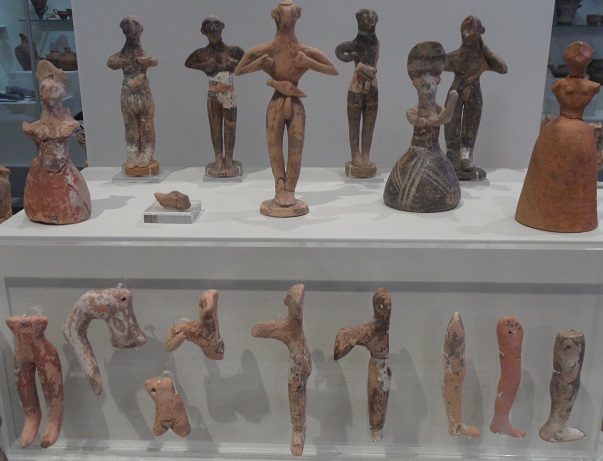
The practice of buying and offering tin ex-voto strips stamped with images of afflicted body parts continues today throughout Greece, where they are sometimes left on shrines or attached with wax to pillars in churches. Thor and I bought ones for our leg/hip issues:
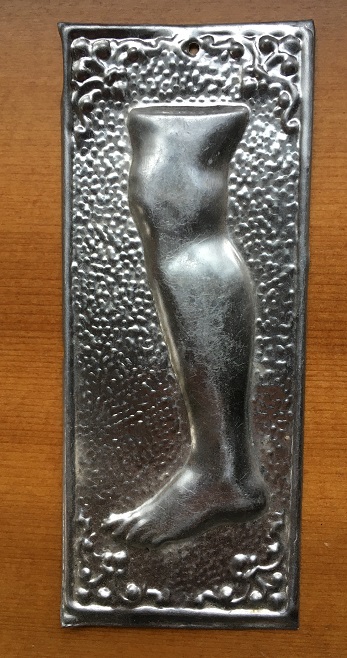
More stylized figurines, circa 1900 BC:
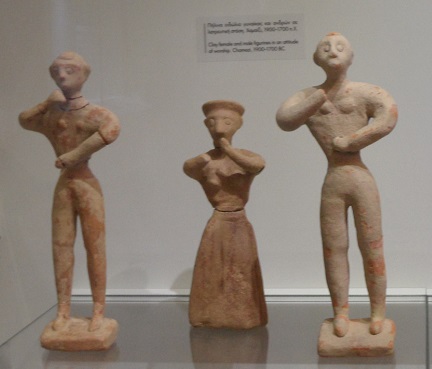
Bulls and their heads and horns were recurring sacred images. These early examples are dated around 2000 BC:
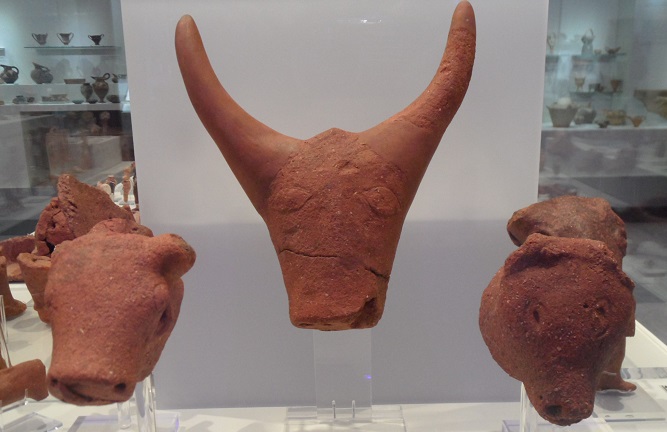
By the early palatial period, the craftmanship was becoming more sophisticated, as in this example from around 1700 BC. By then, there is ample evidence of the importance of the bull-leaping rituals in which male and female athletes gymnastically sprang over a bull’s horns and launched off of its back.
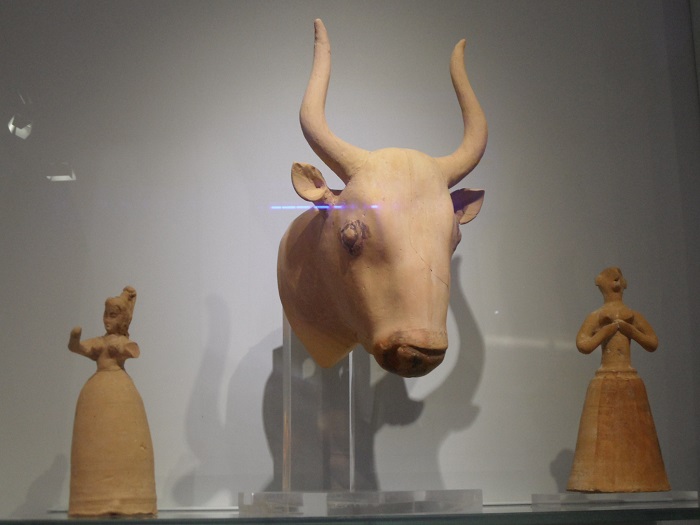
A special treasure in the museum is this gold “bee pendant” from around 1800 BC:
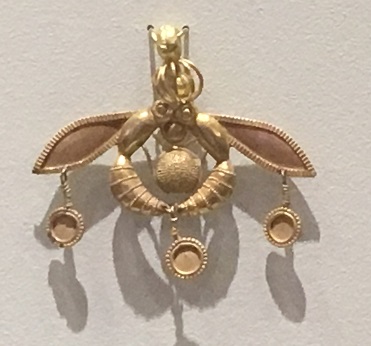

The imagery of the double ax was also appearing as a sacred symbol, this large example made from copper:
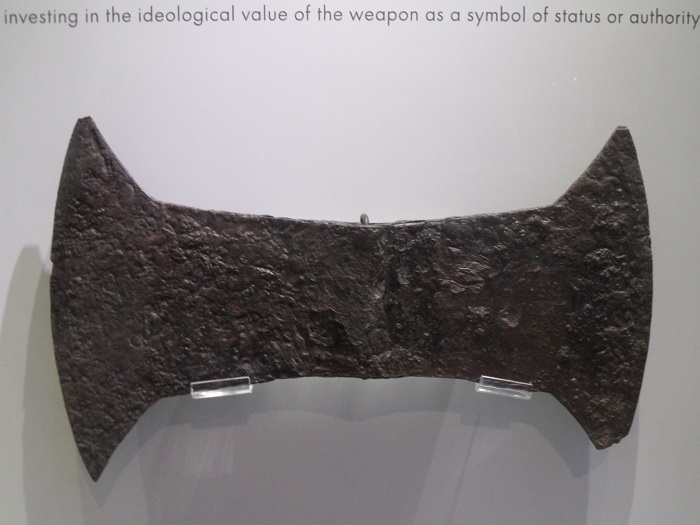
Religious beliefs seem to have centered around honoring natural forces and an earth goddess, and priestesses were prominent. Some early artifacts of cult activities:
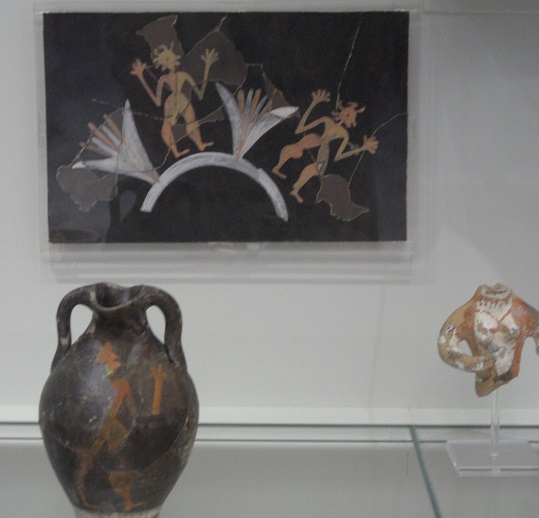
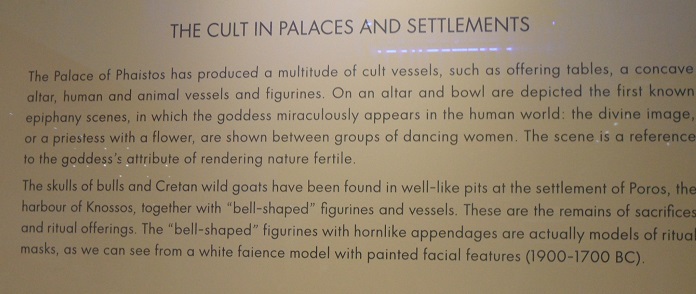
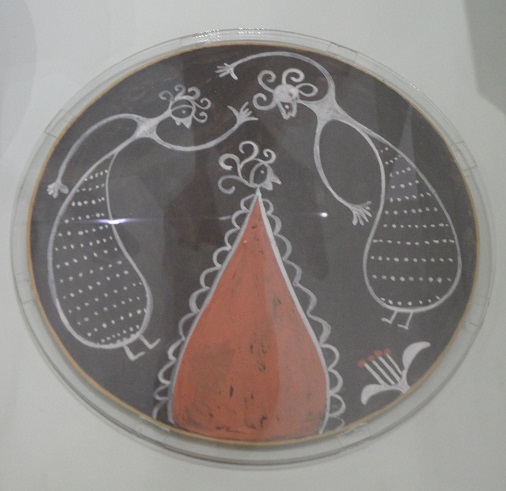
I love the bowl above, so eerily aligned with our modern minimalist art elegance. And I found endearing this small model of a goddess shrine:
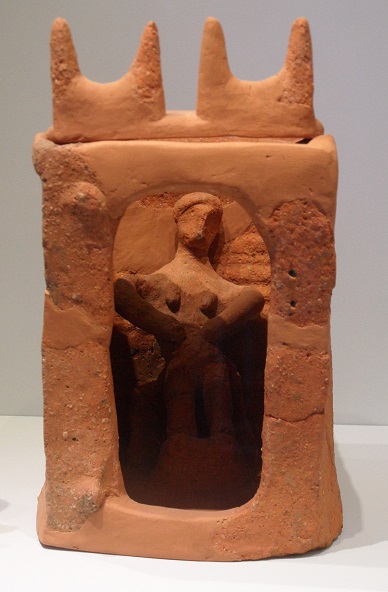
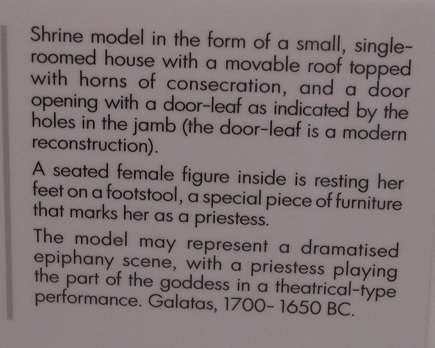
By this time, we have moved into the early palatial period, when the first version of the Knossos complex was built (before being destroyed by a violent earthquake). Many stylized worship figures were found in the layers of Knossos and other palace complexes, this example in bronze:
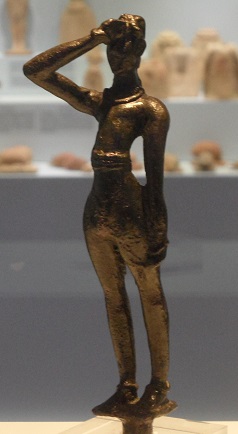

SPOILER ALERT: A rather disturbing find in a cave sanctuary collapsed by one of the catastrophic earthquakes to hit the island may call into question the common assumption of peaceful, nonviolent Minoan culture. (Scholars are still piecing together the sketchy historical record, given that no one has yet deciphered the Minoan hieroglyphics.)
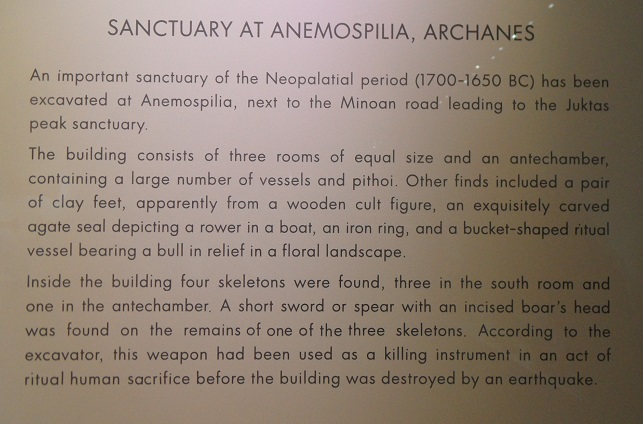
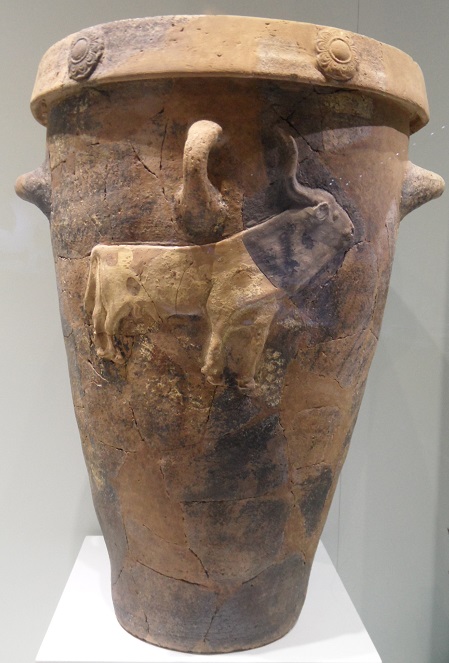
Some scholars question whether or not this was an interrupted human sacrifice, and some have suggested that it may have been an unusual act of desperation in an attempt to appease the forces behind the earthquakes that repeatedly destroyed palace compounds. Almost all of the later art and absence of weapons does support the vision of a peaceful, nature-loving, and women/goddess-honoring culture. Stay tuned for next week’s tour of beautiful frescoes and more from the full flowering of the palatial period!
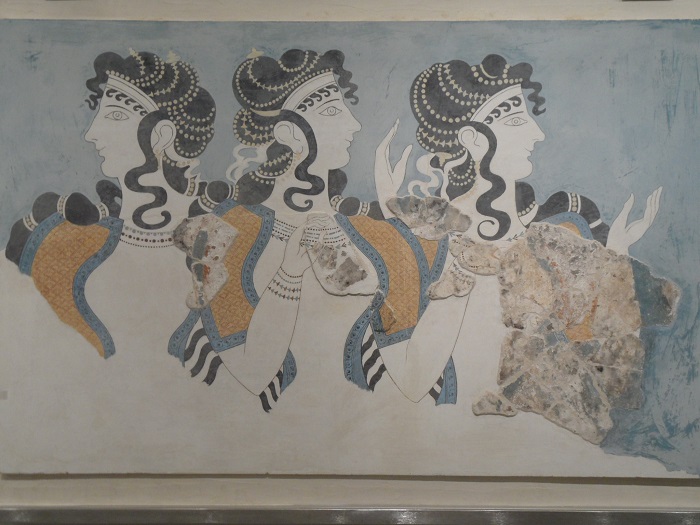
Happy birthday, Thor!
*****
You will find The Rambling Writer’s blog posts here every Saturday. Sara’s latest novel from Book View Cafe is available in print and ebook: The Ariadne Connection. It’s a near-future thriller set in the Greek islands. “Technology triggers a deadly new plague. Can a healer find the cure?” The novel has received the Chanticleer Global Thriller Grand Prize and the Cygnus Award for Speculative Fiction. Sara has recently returned from another research trip in Greece and is back at work on the sequel, The Ariadne Disconnect. Sign up for her quarterly email newsletter at www.sarastamey.com

1 thought on “The Rambling Writer Returns to Crete, Part 16: Iraklion Museum of Archaeology, Early Minoans”